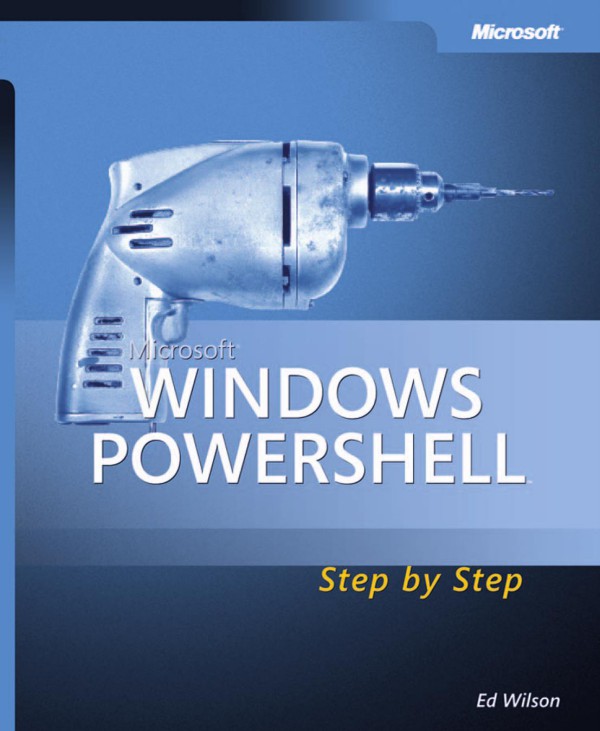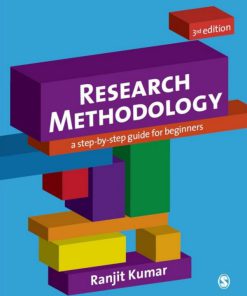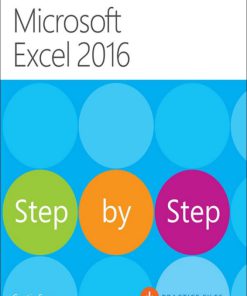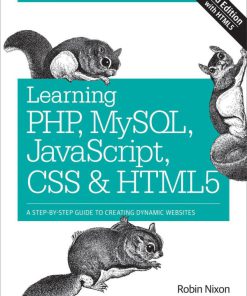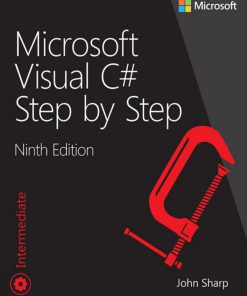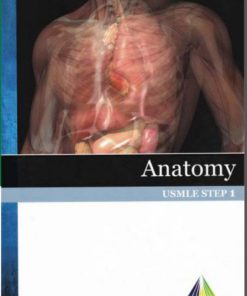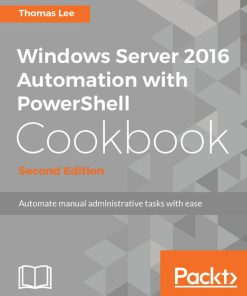Windows PowerShell Step by Step 3rd Edition by Ed Wilson ISBN 1509300465 9781509300464
$50.00 Original price was: $50.00.$25.00Current price is: $25.00.
Authors:Ed Wilson , Series:IT & Computer [327] , Tags:Computer Engineering; Information Technology , Author sort:Wilson, Ed , Languages:Languages:eng , Published:Published:Mar 2007 , Publisher:Microsoft Press , Comments:Teach yourself the fundamentals of Windows PowerShell command line interface and scripting language.Written by a leading scripting expert, this tutorial delivers self-paced labs, timesaving tips, and hands-on sample scripts for automating Windows administration—one step at a time.Discover how to: Use built-in cmdlets to execute commands Write scripts to handle recurring tasks and configure scheduled jobs Use providers to access information external to the shell environment Configure network components using Windows Management Instrumentation (WMI) Manage users, groups, and computers with Active Directory Services Execute scripts for administering and troubleshooting Microsoft Exchange Server 2007 PLUS—Get a complete list of cmdlet commands and a guide for moving from VBScript to Windows Powershell CD features: All practice exercises 100+ sample scripts to adapt for your own work Scriptomatic 2.0 scripting tool WMI scripting tools and utilities Fully searchable eBook A Note Regarding the CD or DVDThe print version of this book ships with a CD or DVD. For those customers purchasing one of the digital formats in which this book is available, we are pleased to offer the CD/DVD content as a free download via O’Reilly Media’s Digital Distribution services. To download this content, please visit O’Reilly’s web site, search for the title of this book to find its catalog page, and click on the link below the cover image (Examples, Companion Content, or Practice Files). Note that while we provide as much of the media content as we are able via free download, we are sometimes limited by licensing restrictions. Please direct any questions or concerns to [email protected].« less; « less
Windows PowerShell Step by Step 3rd Edition by Ed Wilson – Ebook PDF Instant Download/Delivery. 1509300465, 9781509300464
Full download Windows PowerShell Step by Step 3rd Edition after payment
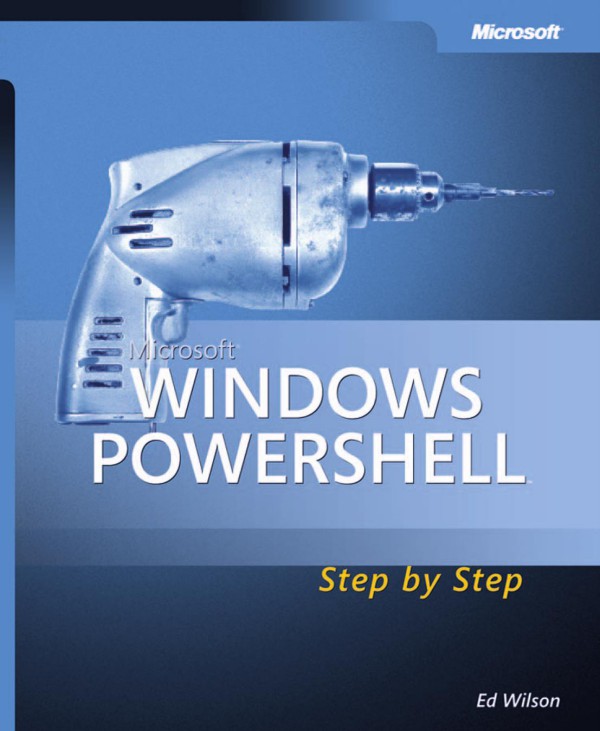
Product details:
ISBN 10: 1509300465
ISBN 13: 9781509300464
Author: Ed Wilson
Your hands-on guide to Windows PowerShell scripting fundamentals Expand your expertise–and teach yourself the fundamentals of Windows PowerShell scripting, including features available in Windows PowerShell 5. If you are an IT professional, power user, or consultant, you’ll get the guidance, exercises, and code you need to master core techniques for automating Windows setup, deployment, and management. Discover how to: Run cmdlets and command-line utilities Administer Windows-based servers and desktops with built-in cmdlets Use providers to access external information Write and run scripts from the Windows ISE Create functions that are easy to maintain Build standardized environments with profiles Automate Windows systems with WMI, CIM cmdlets, and remoting Automate Active Directory Domain Services (AD DS) Debug scripts and handle errors Run commands that survive interruptions Use Desired State Configuration (DSC) to manage software services and their environments Get powerful new modules from PowerShell Gallery About You This book is for: IT professionals and power users who want to get productive with Windows PowerShell, including new features in Windows PowerShell 5 Windows system administrators who want to be more efficient and productive Anyone pursuing Windows PowerShell certifications No experience with Windows PowerShell or other scripting technologies necessary.
Windows PowerShell Step by Step 3rd Table of contents:
Chapter 1. Overview of Windows PowerShell 5.0
Understanding Windows PowerShell
Using cmdlets
Installing Windows PowerShell
Deploying Windows PowerShell to down-level operating systems
Using command-line utilities
Security issues with Windows PowerShell
Controlling execution of Windows PowerShell cmdlets
Confirming actions
Suspending confirmation of cmdlets
Working with Windows PowerShell
Accessing Windows PowerShell
Configuring the Windows PowerShell console
Supplying options for cmdlets
Working with the help options
Exploring commands: Step-by-step exercises
Chapter 1 quick reference
Chapter 2. Using Windows PowerShell cmdlets
Understanding the basics of cmdlets
Using the Get-ChildItem cmdlet
Obtaining a directory listing
Formatting a directory listing by using the Format-List cmdlet
Using the Format-Wide cmdlet
Formatting a directory listing by using Format-Table
Formatting output with Out-GridView
Taking advantage of the power of Get-Command
Searching for cmdlets by using wildcard characters
Using the Get-Member cmdlet
Using the Get-Member cmdlet to examine properties and methods
Using the New-Object cmdlet
Creating and using the wshShell object
Using the Show-Command cmdlet
Windows PowerShell cmdlet naming helps you learn
Windows PowerShell verb grouping
Windows PowerShell verb distribution
Creating a Windows PowerShell profile
Working with cmdlets: Step-by-step exercises
Chapter 2 quick reference
Chapter 3. Understanding and using Windows PowerShell providers
Understanding Windows PowerShell providers
Understanding the alias provider
Understanding the certificate provider
Understanding the environment provider
Understanding the filesystem provider
Understanding the function provider
Using the registry provider to manage the Windows registry
The two registry drives
The short way to create a new registry key
Dealing with a missing registry property
Understanding the variable provider
Exploring Windows PowerShell providers: Step-by-step exercises
Chapter 3 quick reference
Chapter 4. Using Windows PowerShell remoting and jobs
Understanding Windows PowerShell remoting
Classic remoting
WinRM
Using Windows PowerShell jobs
Using Windows PowerShell remoting and jobs: Step-by-step exercises
Chapter 4 quick reference
Chapter 5. Using Windows PowerShell scripts
Why write Windows PowerShell scripts?
The fundamentals of scripting
Running Windows PowerShell scripts
Turning on Windows PowerShell scripting support
Transitioning from command line to script
Manually running Windows PowerShell scripts
Understanding variables and constants
Using the While statement
Constructing the While statement in Windows PowerShell
A practical example of using the While statement
Using special features of Windows PowerShell
Using the Do…While statement
Using the range operator
Operating over an array
Casting to ASCII values
Using the Do…Until statement
Comparing the Windows PowerShell Do…Until statement with VBScript
Using the Windows PowerShell Do statement
The For statement
Using the For statement
Using the Foreach statement
Exiting the Foreach statement early
Using the If statement
Using assignment and comparison operators
Evaluating multiple conditions
The Switch statement
Using the Switch statement
Controlling matching behavior
Creating multiple folders: Step-by-step exercises
Chapter 5 quick reference
Chapter 6. Working with functions
Understanding functions
Using functions to provide ease of code reuse
Including functions in the Windows PowerShell environment
Using dot-sourcing
Using dot-sourced functions
Adding help for functions
Using a here-string object for help
Using two input parameters
Using a type constraint in a function
Using more than two input parameters
Using functions to encapsulate business logic
Using functions to provide ease of modification
Understanding filters
Creating a function: Step-by-step exercises
Chapter 6 quick reference
Chapter 7. Creating advanced functions and modules
The [cmdletbinding] attribute
Easy verbose messages
Automatic parameter checks
Adding support for the -WhatIf switch parameter
Adding support for the -Confirm switch parameter
Specifying the default parameter set
The Parameter attribute
The Mandatory parameter property
The Position parameter property
The ParameterSetName parameter property
The ValueFromPipeline property
The HelpMessage property
Understanding modules
Locating and loading modules
Installing modules
Creating a module
Creating an advanced function and installing a module: Step-by-step exercises
Chapter 7 quick reference
Chapter 8. Using the Windows PowerShell ISE
Running the Windows PowerShell ISE
Navigating the Windows PowerShell ISE
Working with the script pane
Using tab expansion and IntelliSense
Working with Windows PowerShell ISE snippets
Using Windows PowerShell ISE snippets to create code
Creating new Windows PowerShell ISE snippets
Removing user-defined Windows PowerShell ISE snippets
Using the Commands add-on and snippets: Step-by-step exercises
Chapter 8 quick reference
Chapter 9. Working with Windows PowerShell profiles
Six different Windows PowerShell profiles
Understanding the six Windows PowerShell profiles
Examining the $profile variable
Determining whether a specific profile exists
Creating a new profile
Design considerations for profiles
Using one or more profiles
Using the All Users, All Hosts profile
Using your own file
Grouping similar functionality into a module
Where to store the profile module
Creating and adding functionality to a profile: Step-by-step exercises
Chapter 9 quick reference
Chapter 10. Using WMI
Understanding the WMI model
Working with objects and namespaces
Listing WMI providers
Working with WMI classes
Querying WMI
Obtaining service information: Step-by-step exercises
Chapter 10 quick reference
Chapter 11. Querying WMI
Alternate ways to connect to WMI
Returning selective data from all instances
Selecting multiple properties
Choosing specific instances
Using an operator
Shortening the syntax
Working with software: Step-by-step exercises
Chapter 11 quick reference
Chapter 12. Remoting WMI
Using WMI against remote systems
Supplying alternate credentials for the remote connection
Using Windows PowerShell remoting to run WMI
Using CIM classes to query WMI classes
Working with remote results
Reducing data via Windows PowerShell parameters
Reducing data via WQL query
Running WMI jobs
Using Windows PowerShell remoting and WMI: Step-by-step exercises
Chapter 12 quick reference
Chapter 13. Calling WMI methods on WMI classes
Using WMI cmdlets to execute instance methods
Using the Terminate method directly
Using the Invoke-WmiMethod cmdlet
Using the [wmi] type accelerator
Using WMI cmdlets to work with static methods
Executing instance methods: Step-by-step exercises
Chapter 13 quick reference
Chapter 14. Using the CIM cmdlets
Using the CIM cmdlets to explore WMI classes
Using the Get-CimClass cmdlet and the -ClassName parameter
Finding WMI class methods
Filtering classes by qualifier
Retrieving WMI instances
Reducing returned properties and instances
Cleaning up output from the command
Working with associations
Retrieving WMI instances: Step-by-step exercises
Chapter 14 quick reference
Chapter 15. Working with Active Directory
Creating objects in Active Directory
Creating an OU
ADSI providers
LDAP names
Creating users
What is user account control?
Working with users
Creating multiple OUs: Step-by-step exercises
Chapter 15 quick reference
Chapter 16. Working with the AD DS module
Understanding the Active Directory module
Installing the Active Directory module
Getting started with the Active Directory module
Using the Active Directory module
Finding the FSMO role holders
Discovering Active Directory
Renaming Active Directory sites
Managing users
Creating a user
Finding and unlocking Active Directory user accounts
Finding disabled users
Finding unused user accounts
Updating Active Directory objects: Step-by-step exercises
Chapter 16 quick reference
Chapter 17. Deploying Active Directory by using Windows PowerShell
Using the Active Directory module to deploy a new forest
Adding a new domain controller to an existing domain
Adding a read-only domain controller
Installing domain controller prerequisites and adding to a forest: Step-by-step exercises
Chapter 17 quick reference
Chapter 18. Debugging scripts
Understanding debugging in Windows PowerShell
Understanding the three different types of errors
Using the Set-PSDebug cmdlet
Tracing the script
Stepping through the script
Enabling strict mode
Debugging the script
Setting breakpoints
Setting a breakpoint on a line number
Setting a breakpoint on a variable
Setting a breakpoint on a command
Responding to breakpoints
Listing breakpoints
Enabling and disabling breakpoints
Deleting breakpoints
Debugging a function: Step-by-step exercises
Chapter 18 quick reference
Chapter 19. Handling errors
Handling missing parameters
Creating a default value for a parameter
Making the parameter mandatory
Limiting choices
Using PromptForChoice to limit selections
Using Test-Connection to identify computer connectivity
Using the -contains operator to examine the contents of an array
Using the -contains operator to test for properties
Handling missing rights
Using an attempt-and-fail approach
Checking for rights and exiting gracefully
Handling missing WMI providers
Handling incorrect data types
Handling out-of-bounds errors
Using a boundary-checking function
Placing limits on the parameter
Using Try…Catch…Finally
Catching multiple errors
Using PromptForChoice to limit selections and using Try…Catch…Finally: Step-by-step exercises
Chapter 19 quick reference
Chapter 20. Using the Windows PowerShell workflow
Why use workflows?
Workflow requirements
A simple workflow
Parallel PowerShell
Workflow activities
Windows PowerShell cmdlets as activities
Disallowed core cmdlets
Non-automatic cmdlet activities
Parallel activities
Checkpointing Windows PowerShell workflow
Understanding checkpoints
Placing checkpoints
Adding checkpoints
Adding a sequence activity to a workflow
Creating a workflow and adding checkpoints: Step-by-step exercises
Chapter 20 quick reference
Chapter 21. Managing Windows PowerShell DSC
Understanding Desired State Configuration
The DSC process
Configuration parameters
Setting dependencies
Controlling configuration drift
Modifying environment variables
Creating a DSC configuration and adding a dependency: Step-by-step exercises
Chapter 21 quick reference
Chapter 22. Using the PowerShell Gallery
Exploring the PowerShell Gallery
Configuring and using PowerShell Get
Installing a module from the PowerShell Gallery
Configuring trusted installation locations
Uninstalling a module
Searching for and installing modules from the PowerShell Gallery: Step-by-step exercises
Chapter 22 quick reference
Appendix A. Windows PowerShell scripting best practices
General script construction
Include functions in the scripts that use them
Use full cmdlet names and full parameter names
Use Get-Item to convert path strings to rich types
People also search for Windows PowerShell Step by Step 3rd:
microsoft windows powershell step by step
microsoft windows powershell step by step ed wilson
is windows powershell important
where is windows powershell located
windows powershell step by step
You may also like…
eBook PDF
Microsoft Excel 2016 Step by Step 1st Edition by Curtis Frye ISBN 0735697469 9780735697461
eBook PDF
Windows Server 2016 Automation With PowerShell Cookbook 1st Edition by Thomas Lee ISBN 9781787122048

